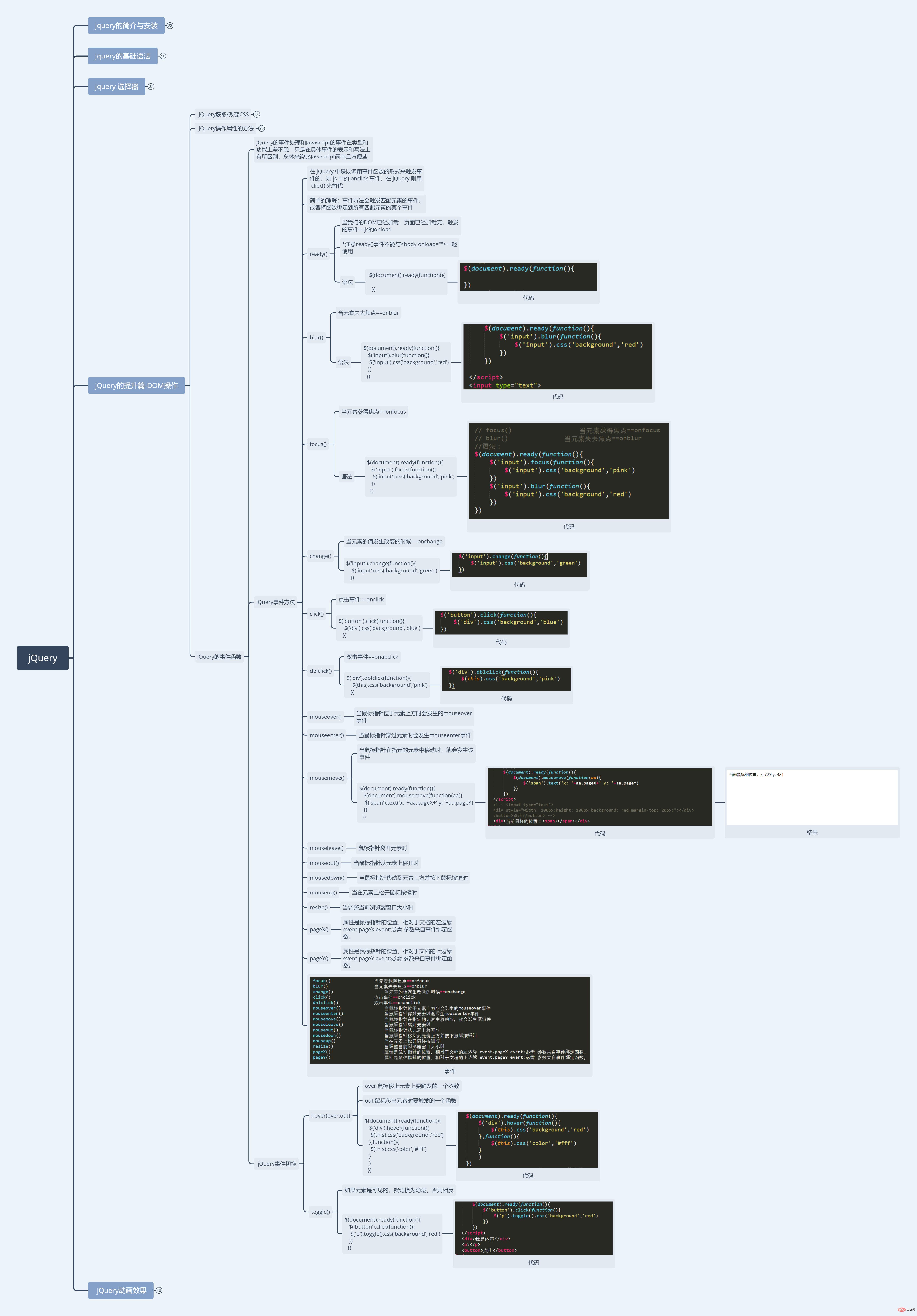摘要:<!DOCTYPE html>
<html>
<head>
<meta charset="UTF-8">
<title>jQuery的事件函數(shù)</title>
<script type="text/javascript" src="
<!DOCTYPE html>
<html>
<head>
<meta charset="UTF-8">
<title>jQuery的事件函數(shù)</title>
<script type="text/javascript" src="jquery-3.3.1.min.js"></script>
</head>
<body>
<!--
在jQuery中是以調(diào)用函數(shù)的形式來觸發(fā)事件的�����,如js中的onclick事件�,在jQuery則用click()來替代
簡單的理解:事件方法會觸發(fā)匹配元素的事件���,或者將函數(shù)綁定到所有匹配元素的事件
ready() 當我們的DOM(文檔對象模型)已經(jīng)加載,頁面已經(jīng)加載完成����,觸發(fā)的事件==相當于我們js的onload事件效果�,ready方法不可以跟onload一起使用
focus() 當元素獲得焦點==onfocus
blur() 當元素失去焦點==onblur
change() 當元素的值發(fā)生改變的時候==onchange
click() 點擊事件==onclick
dblclick() 雙擊事件==onabclick
mouseover() 當鼠標指針位于元素上方時會發(fā)生的mouseover事件
mouseenter() 當鼠標指針穿過元素時會發(fā)生mouseenter事件
mousemove() 當鼠標指針在指定的元素中移動時�,就會發(fā)生該事件
mouseleave() 當鼠標指針離開元素時
mouseout() 當鼠標指針從元素上移開時
mousedown() 當鼠標指針移動到元素上方并按下鼠標按鍵時
mouseup() 當在元素上松開鼠標按鍵時
resize() 當調(diào)整當前瀏覽器窗口大小時
pageX() 屬性是鼠標指針的位置�����,相對于文檔的左邊緣 event.pageX event:必需 參數(shù)來自事件綁定函數(shù)����。
pageY() 屬性是鼠標指針的位置��,相對于文檔的上邊緣 event.pageY event:必需 參數(shù)來自事件綁定函數(shù)�����。 -->
<!-- *注意ready()事件不能與<body onload="">一起使用 -->
<script type="text/javascript">
$(document).ready(function(){
})
// $(document).ready(function(){
// $('input').focus(function(){
// $('input').css('background','pink')
// })
// $('input').blur(function(){
// $('input').css('background','red')
// })
// $('input').change(function(){
// $('input').css('background','green')
// })
// $('button').click(function(){
// $('div').css('background','blue')
// })
// $('div').dblclick(function(){
// $(this).css('background','pink')
// })
// })
$(document).ready(function(){
$(document).mousemove(function(aa){
$('span').text('x: '+aa.pageX+' y: '+aa.pageY)
})
a=0
$(window).resize(function(){
// alert('窗口被調(diào)整大小')
$('b').text(a++)
})
})
</script>
<!-- <input type="text">
<div style="width: 100px;height: 100px;background: red;margin-top: 20px;"></div>
<button>點擊</button> -->
<div>當前鼠標的位置:<span></span></div>
<div>頁面被調(diào)整大小的次數(shù):<b></b></div>
</body>
</html>


